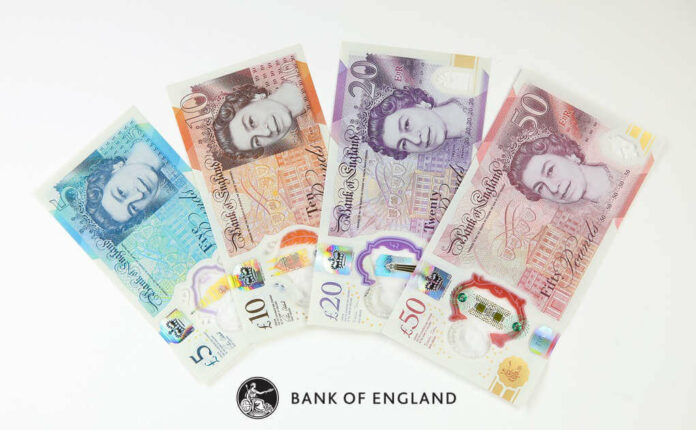
The Bank of England announced on the 29th September 2021 they will be withdrawing legal tender status of the paper-printed £20 and £50 notes from the 30th September 2022. Following on the release of polymer-printed banknotes of the same denominations in 2020 (£20) and the 23rd June 2021 (£50) the Bank routinely removes only the legal tender status of previously issued versions. The change in these notes’ status means they can no longer be used in ordinary transactions but still retain their represented value.

Final Withdrawal of the F Series
£20 Banknotes featuring 18th century Scottish philosopher and economist Adam Smith (1723-1790) who is remembered as one the fathers of modern economics were introduced in 2007 and were part of the F series. In the same series and theme of economics, £50 banknotes featuring 19th century industrialists Matthew Boulton (1728-1809) and James Watt (1736-1819) were released in November 2011. Both were British manufacturers and business partners who are remembered as having founded the largest production factory in the world. His partnership with James Watt to manufacture steam-powered engines enabled them to become pioneers in the field of the engineering industry. Of particular interest in the numismatic field was the manufacture of steam-powered coin presses at Boulton’s Soho Mint in Birmingham which revolutionized the production of circulation coinage.

Introduction of the G Series
Launched in September 2016, the Bank of England’s first polymer banknote featured an image of statesman Winston Churchill (1874-1965). This note was followed in September 2017 with the £10 polymer banknote featuring 18th century poet Jane Austen (1775-1817). The previous paper notes of the same denominations were officially withdrawn from circulation on the on the 5th May 2017 and 1st March 2018 respectively. The Smith banknote was replaced in February 2020 with the third polymer-printed banknote featuring a portrait of 19th century artist Joseph Mallord William Turner (1775-1851) known for his expressive colorizations, imaginative landscapes and turbulent marine paintings. The fourth and final note featuring World War Two-era mathematician Alan Turing (1912-1954) was announced by the Bank of England in July 2019. The announcement occurred after a public consultation was organized to consider nominations for the reverse side of the new banknote. With the issue of the £50 polymer notes, the G series range was complete.
The Bank of England has stated there are approximately £9 billion worth of paper £20 and £15 billion worth of paper £50 notes still in circulation. As they are returned to the Bank of England, they are being replaced with the new polymer £20 notes and polymer £50 notes. After the 30th September 2022, the new polymer notes will be the only ones with legal tender status. From then on, those in the United Kingdom with a bank account will still be able to deposit withdrawn notes into their account. Some Post Offices may also accept withdrawn notes as payment for goods and services or as a deposit to a current account accessed via the Post Office. Holders of £20 and £50 notes outside the UK will have one year from the 30th September 2021 to exchange their banknotes through the usual channels such as currency exchanges and commercial banks. Thereafter anyone visiting the UK may bring any outdated banknotes to the offices of the Bank of England in person to redeem for current currency. The Bank of England also reminds the public that all Bank of England-issued banknotes, regardless of their age or condition are always redeemable.
The author, Michael Alexander is President of the London Banknote and Monetary Research Centre.
For additional information on Bank of England banknotes, please visit the Bank of England website.
Read more about the advantages of polymer banknotes or watch this short video:




